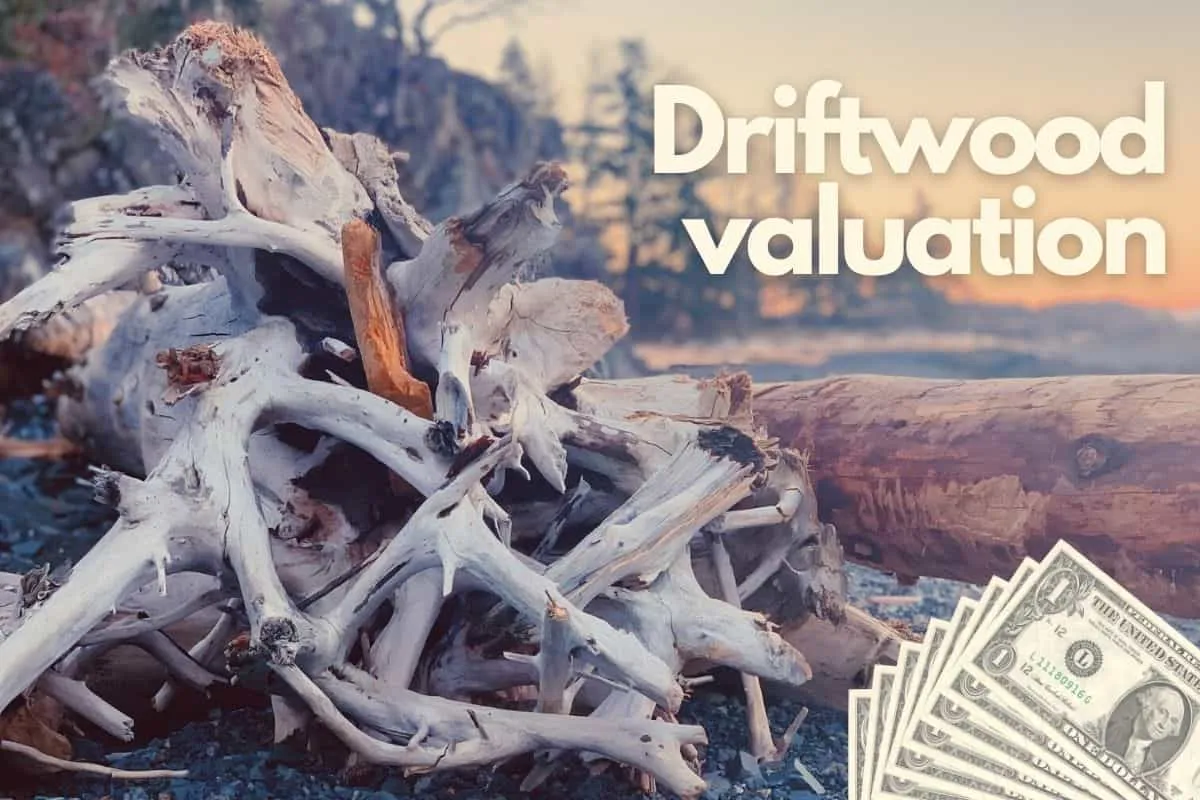Driftwood makes for a great natural way to decorate in and around your house, especially popular as decorations in aquariums, reptile terrariums and other animal enclosures. While driftwood makes a great and attractive addition to your home, you might run into pieces with an absurdly large price tag.
The driftwood market is a niche, yet lucrative market that attracts a large number of hobbyists and craftsmen. There are a handful of sellers that may sell driftwood as aquarium supplies or for other uses and there may be millions waiting to buy them.
Aquarium keeping, where driftwood is mainly used, is a hobby. Thus, this hobby is viewed as an activity where people are willing to shell out large amounts of money. That is because people with aquariums have a lot of money to spare.
What makes driftwood valuable?
As already mentioned, the driftwood market is a niche market. So there are many factors that play into the value of a piece of driftwood. These include the preparation process, shipping costs, supply and demand. Some more exotic and harder to acquire pieces can drive this price up even further.
The process of preparing driftwood for selling and use involves a good amount of steps. First the driftwood needs to be sourced and collected. Then it needs to be cleaned and sanitized to remove bacteria, algae and dirt. Finally, driftwood needs to be soaked and boiled, to remove the tannins imbued within. These tannins can disrupt the water chemistry of the aquarium. Which can be potentially harmful to the fish. Next, shipping costs can significantly boost up the final price of driftwood. This is due to the fact that driftwood can have significant weight to them, even smaller pieces. This is especially true for exotic overseas pieces that need to be shipped practically from the other end of the world. This final price is, of course, your expense, and not the seller’s.
Finally, supply and demand. The more a certain product is in demand, and the more limited the supply of that product is, the more expensive the cost will be. It’s quite simply due to one of the main laws of economics. This also has to do with limited competition. Although there are quite a few sellers of aquarium driftwood, the supply doesn’t seem to be able to keep up with the demand, or at least just barely. It can be said that the demand drives up the price of driftwood significantly. After all, if a dedicated hobbyist is willing to spend more than $50 on a single piece of driftwood, no questions asked, why would the seller lower his price?
Can I make driftwood valuable?
Getting into the driftwood business can be quite a lucrative move. A good profit could be made, with minimal investment and equipment. If you’re ready to put some effort into procuring, cleaning and treating driftwood, you can practically flip a free piece of wood for $20 or more.
The first would be sourcing your driftwood – which can be practically next to any body of water. Do keep in mind that different counties, states, national parks can have different regulations when it comes to collecting driftwood. If you’re planning on acquiring a large amount of driftwood, be sure to ask whoever is in charge of the place, or your local ministry of forestry for any special regulations. Acquiring driftwood from a private property is much simpler, only requires the approval of the owner.
After acquisition, the driftwood needs to be thoroughly cleaned and inspected for any rot, infestation or loose pieces, which can be removed with proper tools. Next step is soaking the driftwood, to remove any embedded chemicals and tannins within it. This can be accomplished by placing it in a container in water for a week or two, changing the water every few days until it runs clear. Finally, sanitize the driftwood by boiling it or bleaching it. If you plan on bleaching it, thoroughly clean it later and let it dry out completely to allow the bleach to evaporate.
Now that your driftwood is ready for sale, the final step is deciding on how to sell. There are various options for this – you can sell it to your various hobbyist friends, over online or local markets, or you can contact aquarium supply stores and artisans that build furniture and decoration out of driftwood, and establish a business with them.
So, as you can see, the main thing that makes driftwood valuable and raises its price is processing the driftwood. Acquisition, cleaning and curing are all factors that raise the price of something you can practically find for free, into a rather valuable commodity. Besides that, the fact that driftwood needs to spend a sizeable amount of time in water to practically “cure” and become driftwood, is also something that makes it valuable.
What is the most expensive driftwood and why is it so expensive?
The priciest driftwood you can acquire are most likely large pieces of exotic hardwood. These types of driftwood are very popular, and very easy to use, as their density allows for minimal soaking time to eliminate buoyancy. For instance, pieces of Malaysian hardwood can go for a large amount of money, due to the place of origin, shipping, and the aforementioned treating process. Same goes for Mopani wood. This exotic, South African wood species is also very popular among aquarium enthusiasts, and pieces can be expensive, just like Malaysian driftwood. Finally, one of the more popular types of driftwood is Manzanita driftwood. While Manzanita is a type of shrub, or small tree, that grows western North America, it is a quite popular and specific type of wood due its branches’ specific shape and red color. So due to low supply, and very high demand, a single piece of these types of driftwood can go for a few dozen, even a hundred dollars, depending on the size.


